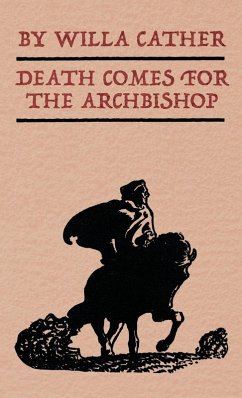Death Comes for the Archbishop is a 1927 novel by American author Willa Cather. It concerns the attempts of a Catholic bishop and a priest to establish a diocese in New Mexico Territory. The novel is based on the life of Jean-Baptiste Lamy (1814-1888), and partially chronicles the construction of the Cathedral Basilica of St. Francis of Assisi. The capture of the Southwest by the United States in the Mexican-American War is the catalyst for the plot. "The Padre of Isleta", Anton Docher is identified as the character of Padre de Baca. Among the entities mentioned in the novel are Los Penitentes, a flagellant lay confraternity in Southern Colorado and New Mexico that still operates today. The novel was reprinted in the Modern Library series in 1931. It was included in Life Magazine's list of the 100 outstanding books of 1924-1944. It was also included on Time's 100 Best English-language Novels from 1923 to 2005 and Modern Library's list of the 100 best English-language novels of the 20th century and was chosen by the Western Writers of America to be the 7th-best "Western Novel" of the 20th century. James Paul Old of Valparaiso University uses Death Comes for the Archbishop as a literary example of the notion that religious faith is able to develop and maintain strong social bonds in nascent democratic political orders. He argues that even though Cather's early novels, such as My Ántonia, typically represent religious characters as closed-minded, her personal religious realignment at the time allowed her to alter her perspective and develop more positive religious characters, in this case Catholic ones. And while some of her contemporary critics found her out of step with the experiences of common people, later critics, such as Old, praised her for a "search for a basis of order and cultural stability beyond the confines of contemporary secular culture." Additionally, scholars note that Latour's character is not strictly placed within the male-female binary, but instead, as Jennifer A. Smith argues, "oscillates between norms of femininity and masculinity." In developing a theory that Cather had questioned her own gender in the 1920s, Patrick W. Shaw suggests that "fundamental double entendres" and "elaborate image clusters" throughout the novel support a reading of sexual disregularity and ambiguity. (wikipedia.org)
Hinweis: Dieser Artikel kann nur an eine deutsche Lieferadresse ausgeliefert werden.
Hinweis: Dieser Artikel kann nur an eine deutsche Lieferadresse ausgeliefert werden.









